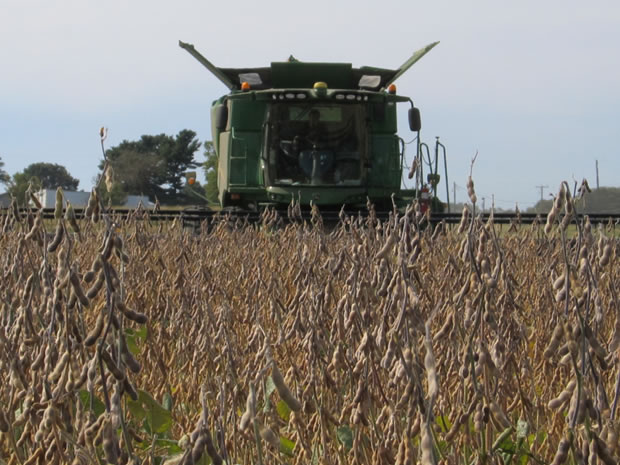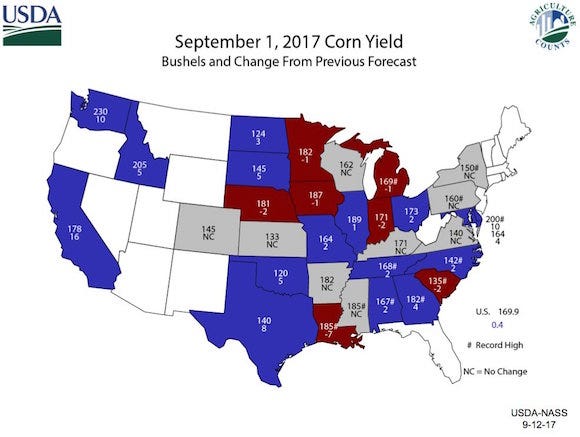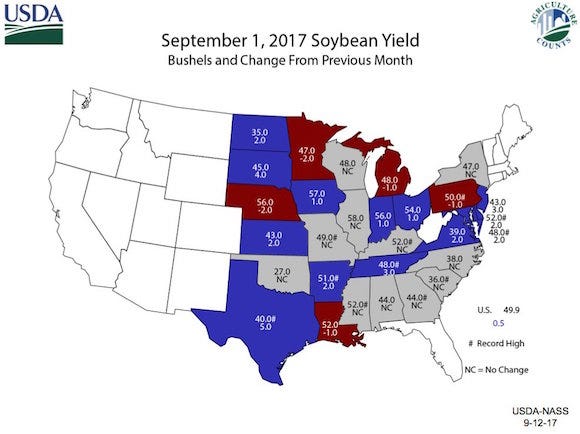
USDA delivers another bearish surprise to the market by RAISING soybean yields once again, this time from 49.4 to 49.9 bushels per acre and bumped their forecast for yet another new record U.S. crop. The USDA was also more optimistic than many have been thinking in regard to corn, as the yield was RAISED from 169.5 to 169.9 bushels per acre. Below are some additional specifics:
CORN:
U.S. corn outlook is bearish on increased production estimate. Corn production is forecast at 14.184 billion bushels, up +32 million from last month on an INCREASE in yield from 169.5 to 169.9 bushels per acre. If realized, this will be the third largest crop in U.S. history. On the demand side of the equation, Feed and Residual use for 2017/18 is raised +25 million bushels, but corn used for ethanol for 2017/18 is lowered -25 million bushels to 5.475 billion. In addition "Other Industrial" usage is lowered by -50 million bushels. Exports were left "unchanged". Net-net, total demand was lowered, not increased like many in the trade were anticipating. Global production for 2017/18 is forecast up +2.4 million tons. Foreign corn production is forecast to decline relative to last month with reductions for Serbia, Ukraine, the EU, and Russia more than offsetting increases for Argentina and Mexico. Argentine new-crop corn bumped higher from 40.0 to 42.0 MMTs. The projected range for the season-average corn price received by producers is lowered $0.10 cents on both ends to a range of $2.80 to $3.60 per bushel. GET ALL MY DAILY GRAIN NEWS HERE

SOYBEAN:
Soybean production is projected at a record 4.431 billion bushels, up +50 million on a higher yield forecast. Total U.S. soy production estimated to be up +3% compared to last year. Yield was bumped +0.5 bushels higher from 49.4 to 49.9, while harvested acres was left unchanged at record levels. With increased supplies and low prices, soybean exports are raised to 2.250 billion bushels leaving new crop ending stocks unchanged. Changes for 2016/17 include higher exports, higher crush, and lower ending stocks. Exports are increased +20 million to 2.170 billion bushels based on official trade data through July and indications from August export inspections. With crush raised +5 million bushels, ending stocks are projected at 345 million bushels, down -25 million from last month. The 2017/18 foreign oilseed production is projected at 445.8 million tons, nearly unchanged from last month. China soy imports raised from 94.0 to 95.0 MMTs. The 2017/18 U.S. season-average soybean price is forecast at $8.35 to $10.05 per bushel, down $0.10 at the midpoint.

About the Author(s)
You May Also Like






